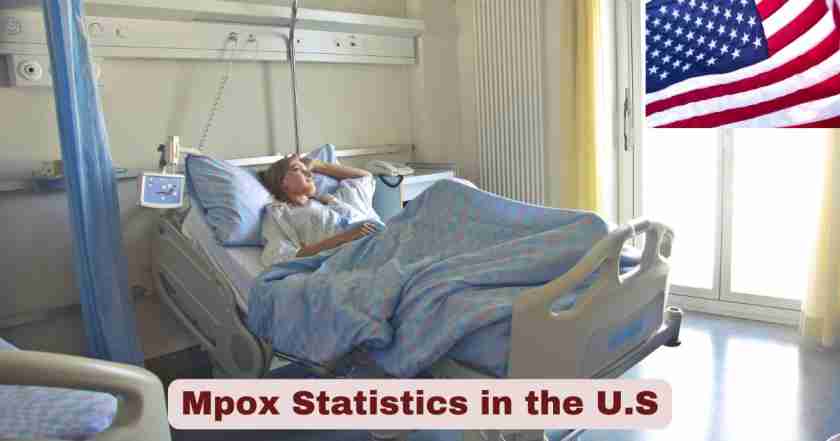Mpox in the United States 2025
The mpox landscape in the United States has evolved significantly throughout 2025, with health authorities maintaining vigilant surveillance across both clade I and clade II variants of the virus. The Centers for Disease Control and Prevention (CDC) continues to monitor the circulation of mpox at low levels nationwide, while implementing comprehensive prevention strategies and maintaining robust detection systems through existing surveillance networks, including innovative wastewater testing programs.
As we progress through 2025, the United States faces a dual challenge of managing ongoing clade II mpox circulation that has persisted since the 2022 global outbreak, while simultaneously preparing for and responding to travel-associated clade I mpox cases. The CDC’s assessment indicates that the risk to the overall U.S. population remains low, though targeted surveillance and prevention efforts continue across state, tribal, local, and territorial public health departments to ensure early detection and rapid response to any emerging cases.
Key Mpox Facts in the US 2025
| Mpox Facts | Details |
|---|---|
| Total Clade I Cases in US 2025 | 4 cases (travel-associated) |
| Clade I Case Fatality Rate | Lower for subclade Ib |
| Global Clade II Cases Since 2022 | Over 100,000 cases |
| Countries Affected Globally | 122 total countries |
| US Risk Assessment Level | Low |
| NYC Cases (Jan-July 2025) | 107 cases |
| NYC Recent Cases (June-July) | 34 cases |
| Wastewater Surveillance Sites | Active nationwide |
| Vaccine Type Available | JYNNEOS vaccine |
| Primary Transmission Mode | Close contact/sexual contact |
The data reveals that mpox continues to present challenges in the United States during 2025, with four confirmed clade I cases representing a new development in the country’s mpox landscape. These travel-associated cases occurred in California (November 2024), Georgia (January 2025), New Hampshire (February 2025), and New York (February 2025), marking separate events with no additional community spread reported. The CDC’s assessment maintains that the risk remains low for the general population, while New York City has documented 107 cases from January through July 2025, with 34 cases occurring in just the recent month between June 8 and July 5, 2025.
Understanding these statistics becomes crucial as clade II mpox continues circulating at low levels across the United States, representing an ongoing public health consideration that requires sustained attention. The JYNNEOS vaccine remains the primary prevention tool, while wastewater surveillance provides an additional layer of detection capability that enhances traditional case-finding methods throughout the country.
Clade I Mpox Cases in the US 2025
| Location | Month | Travel History | Community Spread |
|---|---|---|---|
| California | November 2024 | Central/Eastern Africa | None reported |
| Georgia | January 2025 | Central/Eastern Africa | None reported |
| New Hampshire | February 2025 | Central/Eastern Africa | None reported |
| New York | February 2025 | Central/Eastern Africa | None reported |
The emergence of clade I mpox cases in the United States represents a significant development in the country’s 2025 mpox surveillance landscape. These four documented cases occurred across different states and time periods, each linked to recent travel to affected areas in Central and Eastern Africa. Importantly, health authorities have confirmed that these represent separate, unlinked events with no evidence of additional community transmission, demonstrating the effectiveness of current containment and contact tracing protocols.
The geographic distribution of these cases spans from the West Coast to the East Coast, including California, Georgia, New Hampshire, and New York, indicating that mpox surveillance systems are functioning effectively across diverse regions of the country. Each case was identified through established public health protocols, with patients having documented travel histories to regions experiencing clade I mpox outbreaks. The CDC’s rapid response and coordination with state health departments ensured immediate case investigation, contact tracing, and implementation of appropriate isolation measures to prevent further transmission.
Clade II Mpox Circulation Trends in the US 2025
| Surveillance Metric | Status 2025 | Comparison |
|---|---|---|
| Circulation Level | Low levels | Ongoing since 2022 |
| Detection Method | Multiple systems | Enhanced surveillance |
| Wastewater Monitoring | Active nationwide | New capability |
| Risk Assessment | Low population risk | Regularly updated |
Clade II mpox continues to circulate throughout the United States at consistently low levels during 2025, representing a continuation of patterns established during the global outbreak that began in 2022. This ongoing circulation affects multiple communities across the country, though at significantly reduced rates compared to peak outbreak periods. The CDC’s surveillance data indicates that while transmission continues, the overall risk to the general population remains low, with targeted prevention efforts focusing on populations most affected by mpox.
The surveillance infrastructure has been significantly enhanced since the initial outbreak, incorporating innovative wastewater monitoring systems alongside traditional case detection methods. This multi-layered approach allows public health officials to detect potential increases in mpox activity before they become apparent through clinical case reports. The wastewater surveillance program provides valuable early warning capabilities, particularly in communities where mpox has previously circulated, enabling more rapid public health responses and targeted intervention strategies when needed.
Regional Mpox Data in the US 2025
| Region/City | Cases Reported | Time Period | Notable Trends |
|---|---|---|---|
| New York City | 107 total cases | January-July 2025 | 34 cases in recent month |
| California | 1 clade I case | November 2024 | Travel-associated |
| Georgia | 1 clade I case | January 2025 | Travel-associated |
| New Hampshire | 1 clade I case | February 2025 | Travel-associated |
| New York State | 1 clade I case | February 2025 | Travel-associated |
Regional surveillance data for 2025 reveals distinct patterns of mpox activity across different areas of the United States. New York City stands out with 107 documented cases from January through July, including a notable 34 cases occurring between June 8 and July 5, representing the most significant concentration of mpox activity in any single metropolitan area during this period. This NYC data suggests continued community transmission of clade II mpox in urban areas where the virus has previously established circulation patterns.
The travel-associated clade I cases demonstrate the geographic diversity of mpox surveillance capabilities, with cases identified in states spanning from the Pacific Coast to New England. Each of these four cases was successfully contained without subsequent community transmission, highlighting the effectiveness of coordinated public health responses between federal, state, and local authorities. The absence of community spread from these travel-associated cases indicates that current prevention strategies and healthcare provider awareness are functioning effectively to prevent establishment of clade I transmission chains within U.S. communities.
Global Context and US Preparedness in 2025
| Global Metric | 2025 Status | Impact on US |
|---|---|---|
| Countries with Clade I | Multiple in Africa | Travel-associated risk |
| Global Clade II Cases | Over 100,000 | Ongoing circulation |
| Travel-Associated Cases | 23 countries affected | Enhanced screening |
| US Risk Level | Low | Maintained surveillance |
The global mpox landscape in 2025 significantly influences United States preparedness strategies and risk assessment protocols. Outbreaks of clade I mpox continue across Central and Eastern Africa, with sustained human-to-human transmission documented in Burundi, Democratic Republic of the Congo, Kenya, Rwanda, Tanzania, Uganda, and Zambia. This international situation necessitates enhanced travel-related surveillance and healthcare provider education to ensure rapid identification of potential importation cases.
Twenty-three countries have reported travel-associated clade I mpox cases since January 2024, including Australia, Belgium, Brazil, Canada, and multiple European nations, demonstrating the global interconnectedness that requires ongoing vigilance. The United States benefits from this international surveillance network, which provides early warning of potential importation risks and enables proactive preparation of diagnostic capacity, treatment protocols, and prevention strategies. The CDC’s international collaboration with African partners and global health organizations ensures that U.S. preparedness efforts remain informed by real-time intelligence about outbreak evolution and transmission patterns worldwide.
Healthcare System Response in the US 2025
| Response Component | 2025 Implementation | Effectiveness |
|---|---|---|
| Surveillance Systems | Multiple detection methods | High sensitivity |
| Laboratory Capacity | Nationwide testing | Rapid turnaround |
| Vaccine Availability | JYNNEOS distributed | Targeted deployment |
| Healthcare Provider Training | Ongoing education | Enhanced recognition |
The United States healthcare system has demonstrated robust preparedness and response capabilities throughout 2025, building upon lessons learned from the 2022 mpox outbreak and incorporating enhanced surveillance technologies. Healthcare providers across the country have received updated training and clinical guidance for mpox recognition, diagnosis, and management, ensuring rapid identification of potential cases. The laboratory network maintains high-capacity testing with rapid turnaround times, enabling swift confirmation of suspected cases and appropriate public health responses.
Vaccine distribution strategies have evolved to ensure equitable access to the JYNNEOS vaccine for populations most at risk, while wastewater surveillance programs provide community-level monitoring capabilities that complement traditional clinical detection methods. The coordination between federal, state, and local health authorities has proven effective in managing both travel-associated clade I cases and ongoing clade II circulation. This multi-layered approach combines clinical surveillance, laboratory diagnostics, environmental monitoring, and targeted prevention efforts to maintain low population risk levels while ensuring rapid response capabilities for any changes in transmission patterns.
Disclaimer: The data research report we present here is based on information found from various sources. We are not liable for any financial loss, errors, or damages of any kind that may result from the use of the information herein. We acknowledge that though we try to report accurately, we cannot verify the absolute facts of everything that has been represented.







